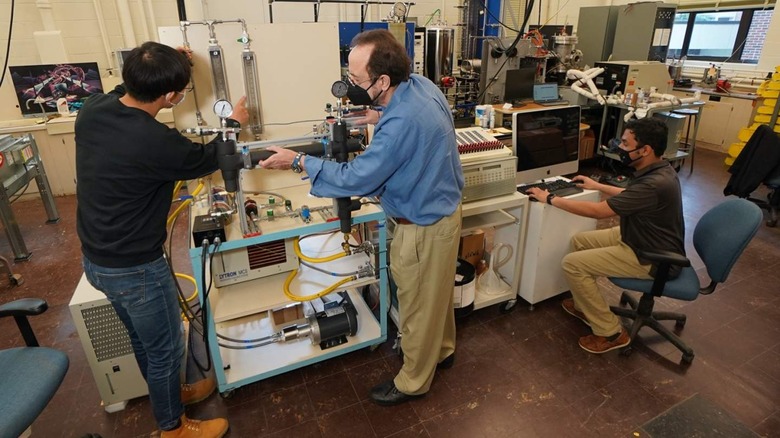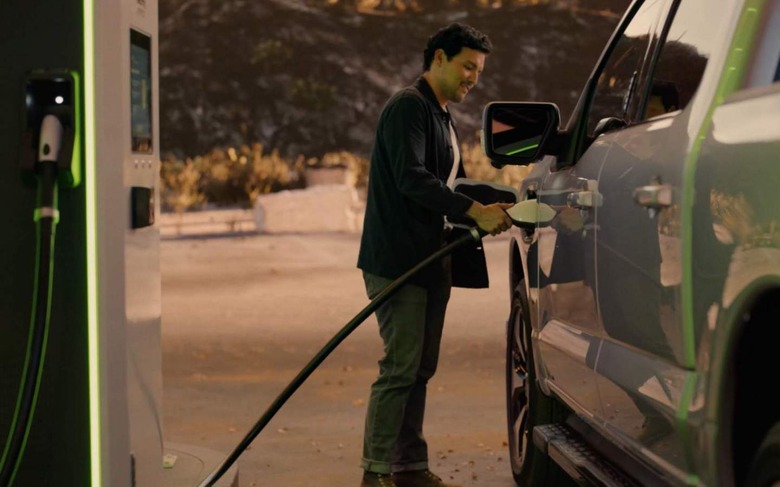This Ford-Backed EV Cable Wants To Quadruple Charging Rates
A new strategy to squash electric vehicle range anxiety is focusing on unexpected bottlenecks in charging rather than squeezing bigger batteries into cars and SUVs, with the goal of making a recharge as fast as filling up a gas tank. Although high-power chargers are increasingly commonplace, and EVs with big enough battery packs for 500+ miles of range are finally ready to hit the market, it's the cable that connects the two which new research could improve significantly.
While price, bulk, weight, and materials availability are the big hurdles for fitting outsized batteries into new EVs, for charging the main issue is heat. On the battery pack side, automakers typically rely on liquid cooling to keep the cells from overheating: that's not just a safety consideration but an efficiency one, as there's a sweet-spot for peak recharge rates.
The charger itself, though, has components which also depend on maintaining a safe temperature range. The cable linking DC fast chargers to the EV can be a serious culprit in slowing the whole process down, since high-current connections typically mean high waste heat output. It's managing that which a Purdue University project funded by Ford has been focusing on.
The alternative cooling method – which is currently only functional in the lab, with a prototype cable for actual EV testing still as much as two years out – relies on liquid-to-vapor cooling. Heat generated within the cable converts a liquid to vapor, which is then cycled out, cooled and returned to liquid form, and then passed through the system again. The result, the Purdue University researchers say, is an approach which can handle far more heat than current liquid-cooled systems already deployed in charging stations.
In fact, the current prototype can handle more than 2,400 ampere currents, the team says. That's more than 1,000 amperes more than would be required to trim EV charging down to around five minutes plugged-in, and more than 4.5 times as much as the best chargers currently deployed in the wild.
"The most advanced chargers in the industry deliver only currents up to 520 amperes," the researchers say, "and most chargers available to consumers support currents of less than 150 amperes."

For Ford, which backed the R&D, there's obvious appeal to the project. "This innovation could one day deliver significantly more power than today's leading systems to re-charge electric vehicles," the automaker pointed out of the research, "making the potential of faster re-charging times possible if vehicle charging and other technology enhancements are made in parallel. Ultimately, this could eventually lead to re-charging EVs as quickly as conventional gas station fill-ups."
Range anxiety is frequently among the most common concerns for potential electric vehicle buyers, far more familiar with the idea of topping up their gas tank. Charger infrastructure has improved considerably over recent years, while in tandem EVs themselves have improved on charge rates. The upcoming 2022 F-150 Lightning, for example, will support up to 150 kW DC fast charging; Ford says that, with a sufficiently-potent charger, its electric pickup could go from 15 to 80% charge in around 41 minutes.

This new cable tech, though, could slash that wait hugely. According to the researchers, it might unlock the same sort of recharge in just five minutes or thereabouts.
Unsurprisingly, there's more to rolling out liquid-to-vapor cooling chargers than just swapping out a cable. For a start, the rest of the charger hardware, and the EV itself, need to be compatible with the maximum ampere rating. Otherwise, as is the case when plugging an existing EV into a DC fast charger today, vehicle and charging station would negotiate the fastest supported rate which would almost certainly be lower than the peak the charger alone could theoretically provide.
Just as a functional prototype that'll work with EVs is some way out, then, Purdue and Ford concede that a production-ready implementation is still a distant prospect.
